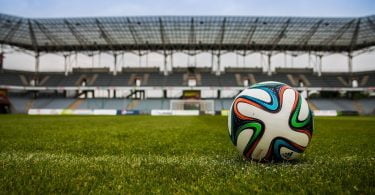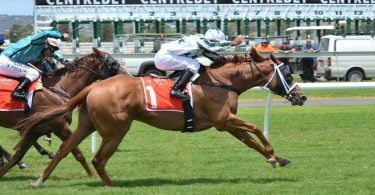It is 2003, and against the backdrop of the vertiginous gradients of the climb at Luz-Ardidnen, Lance Armstrong elects to attack to bolster his 15 second general classification advantage over peren
It is 2003, and against the backdrop of the vertiginous gradients of the climb at Luz-Ardidnen, Lance Armstrong elects to attack to bolster his 15 second general classification advantage over perennial adversary Jan Ullrich. In pursuit of his record equalling fifth Tour coronation, Lance shadowed by Spaniard Iban Mayo, leads a surge that winds Ullrich, breaching a gap of four or five bike lengths between the rivals. Seizing the moment, Armstrong rises from his saddle, searing past the throng of impassioned Tour spectators that cordon the mountain pass. The French crowd are privy to the devastation of Lance’s attacks, and ready themselves for a patented, storming escape. Out of the mass, a young boy blithely waves his yellow, Tour Edition carrier bag into the path of an onrushing Armstrong.
Fate intervenes.
In a ruinous instant, the bag snags the handlebars of the reigning champion, prising him from his bike to a thudding meet with the asphalt below. Unable to compute the fall, the pursuing Mayo’s momentum sends him hurtling into the floored Texan. As Armstrong sets about extricating himself from the tangle of limbs and spokes he and Mayo have become, Ullrich calmly circumvents the pandemonium, opportunistically continuing his ascent.
Like any captivating plot, a seemingly insurmountable hurdle is paramount.
Bloodied but ultimately unbowed, Armstrong with the assistance of a willing fan, remounts his bike in a haze of disorientation. A passing teammate becalms him, shelters him and endeavours to tow him up the winding route to the fleeing Ullrich who has swiftly stolen a fifteen second gap. Overcoming an unhitched cleat, that authors a near castrating slip from his saddle, Armstrong hauls himself back into the lead group.
Status Quo is returned, but the against-all-odds comeback needs capping.
His treasured Maillot Jaune smeared in mud, and mouth ajar as his lungs plea for more oxygen, Armstrong redirects his surplus of adrenaline fed by the crash, to fruitful ends. Responding to an Iban Mayo attack, Armstrong counters and then overhauls his opponent. In a blaze of motion, Lance abandons a dumbfounded Ullrich to dwell on the lower reaches of the climb.
With the phoenix from the flames narrative complete, Armstrong summits to gushing eulogies from global commentaries and to rapturous applause from incredulous onlookers.
Perhaps no chapter in Lance Armstrong’s twenty year cycling career chronicles the rampant mythology behind the man. The attributes which his devotees so cherish were on full display; the heart to rebound from the troughs of the French tarmac, the nerve to practice composure amidst disarray, and the audacity to issue a fatal counterattack to an awed peloton. In many ways this sporting snapshot of Lance serves as an allegory for his rise from the grasp of testicular, brain and lung cancer to prize mountain tamer. Every revolution of his wheel, every stamp of the pedal cultivating a superhuman mystique that transcended cycling spheres, nourishing millions with the wholesome inspiration they so depended on to galvanise themselves against their own, personal cancers.
But it is a fable, along with many others, that the US Anti-Doping Agency have banished from our collective psyche in light of their decision to strip Lance of his seven Tour de France titles due to alleged doping infractions. A host of timeless sporting moments of heroism destined to be recanted to posterity, cast into a forgotten wasteland of simulated fantasies.
This past week, Armstrong who maintains his innocence against doping accusations, has become the moot topic of the sporting world. This follows his decision not to contest doping charges premised upon the use of EPO, blood transfusions and perhaps more disturbingly, his governance of a furtive US Postal/Discovery team doping ring with a stranglehold on the truth. The proliferation of press attention documenting Lance’s fall from grace has been divisive; cycling luminaries such as Eddy Merckx have backed him suggesting the case will shortly be dispatched, whilst the predominance of British newspapers have interpreted his submission to the rigours of court wrangling, as an outright admission.
Existing on the peripheries of morality, this tragic tale asks of even the most tenuous sports fan, where do you stand? How do you digest this bitter dish?
Some declare that Armstrong’s unstinting benevolence in the cancer community – he founded the fundraising and Cancer awareness vehicle the Livestrong organisation in 1998 – frees him of widespread condemnation, particularly as he participated in an epoch of cycling riddled with Performance Enhancing Drugs. Conversely, his lynch mob, of which is over-subscribed, point to the stream of disingenuous denials of doping, and his relative egotism in posing as America’s righteous, false idol over the last decade.
The ethical preaching of both camps does not seem to acknowledge the mutual exclusivity of both their stances; too often we expect the virtuous to arise from a sporting domain populated by largely self-absorbed, success driven figures. Lance did not ask for cancer, yet when it came he leveraged his rejuvenation and social standing for a greater good. This does not make him unimpeachable; Armstrong is of course responsible for his actions. Likewise, Lance did not ask to be heralded as a deity by so many; too many forget that behind the stratum of mythology remains an abrasive, headstrong man from Plano, Texas.
In all, his external life can not be invoked to increase or decrease his culpability as a doping athlete. By resorting to a plethora of vials and syringes, he is shown to be cut from the same cloth as brazen cheats Jan Ullrich, Ivan Basso and Alexandre Vinokourov. Any question of moral fibre remains irrelevant.
Other publications have delved into the cases consequences for drug testing protocol. Armstrong has been charged, despite no categorical failed drugs test ever unfolding during his career. Instead, witness accounts rendered by the testimony of former teammates equally complicit in doping activity form the crux of the evidence against Armstrong. Ensnared into assisting the USADA case, these riders were incentivised by the promise of mitigation of their own doping sanctions.
This triggers some dismaying ruminations for sports fans of any discipline. Is drugs testing effective, or merely bothersome for the sophisticated doper? Can the spontaneous conjecture of any outspoken miscreant be cause for extensive investigation and vilification of potentially innocent athletes?
The narrative is so interwoven and cross threaded, mired in inconclusiveness and painstakingly depressing that the issue of gaining any clarity from events becomes intensely problematic.
For me, the utmost anguish of this story is in the consignment of a collection of iconic sporting moments to an unsavoury scrapheap. Lance’s ascent of the Luz-Ardidnen in 2003, his breakaway on the slopes of Hautacam in 2000, and his contemptuous glance at Ullrich as he obliterated him on the Alpe d’Huez in 2001 all filed away in the attic, like some uncomfortable family secret. Yes, this is a tale with crossover appeal but forget moral proselytising and anti-doping science; the legend of Lance Armstrong was carved out over seven years of toil and across hundreds of French peaks. It’s about a bike and a bike alone.
For those who were glued to their television set in awe of Armstrong’s thaumaturgy, it is not hyperbolic to suggest that barring an equally miraculous absolution, a period of mourning has been ushered in. For those, like myself, we can only trust that as the full content of Armstrong’s misdemeanours are fleshed out that we come to appreciate the necessity for such a ruthless denigration of a purported hero. Until then many will yearn to forget the halcyon days of Pyrenean combat that inspired so greatly, but will be recalled so unwillingly.
Rewatch his Luz-Ardidnen climbing feat; the magic remains no more.








